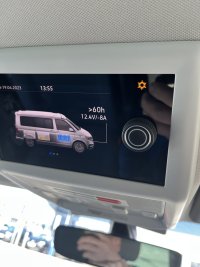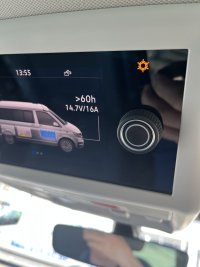Tarquers
Lifetime VIP Member
Did some research to understand charging of leisure batteries after hearing about 80% capacity for smart alternators and put it to the test on a long run recently. Nothing smart about the alternator by the way, just the electronics that control its charging state.
The battery system works in such a way that the alternator only charges batteries under certain conditions to reduce emissions and also keeps capacity in the battery free for regenerative braking to work.
So scenario 1, accelerating. To reduce load on the engine the alternator does not engage. Scenario 2, coasting. The alternator engages to provide engine braking.
So in normal driving, the batteries charge together with the leisure batteries and are charged at a time when the van decides it’s appropriate to charge but only to 80%. Leisure batteries cannot charge more than the 80% either through driving.
When charged on EHU, battery voltage is higher than the no-charge state of the alternator so leisure batteries will discharge (only when engine on and relay engaged) to the 80% level due to the design (no cutout on leisure batteries when fully charged).
So how to test this? Simply drove along and watched the voltage on screen. Steady 12.7v. Then engaged forced charging. Steady 15v or so. Allows batteries to charge above 80% from both EHU and driving, then observed voltage, 12.7v and a negative amp flow.
Conclusion I came to is that to maximise leisure batteries for camping must keep max charge engaged or accept a lower length of time that the batteries will support a charge. If you know the site has an EHU, then it doesn’t matter, but otherwise for wild camping or day can use, you get up to 20% less performance with an (un)smart alternator.
The battery system works in such a way that the alternator only charges batteries under certain conditions to reduce emissions and also keeps capacity in the battery free for regenerative braking to work.
So scenario 1, accelerating. To reduce load on the engine the alternator does not engage. Scenario 2, coasting. The alternator engages to provide engine braking.
So in normal driving, the batteries charge together with the leisure batteries and are charged at a time when the van decides it’s appropriate to charge but only to 80%. Leisure batteries cannot charge more than the 80% either through driving.
When charged on EHU, battery voltage is higher than the no-charge state of the alternator so leisure batteries will discharge (only when engine on and relay engaged) to the 80% level due to the design (no cutout on leisure batteries when fully charged).
So how to test this? Simply drove along and watched the voltage on screen. Steady 12.7v. Then engaged forced charging. Steady 15v or so. Allows batteries to charge above 80% from both EHU and driving, then observed voltage, 12.7v and a negative amp flow.
Conclusion I came to is that to maximise leisure batteries for camping must keep max charge engaged or accept a lower length of time that the batteries will support a charge. If you know the site has an EHU, then it doesn’t matter, but otherwise for wild camping or day can use, you get up to 20% less performance with an (un)smart alternator.
















